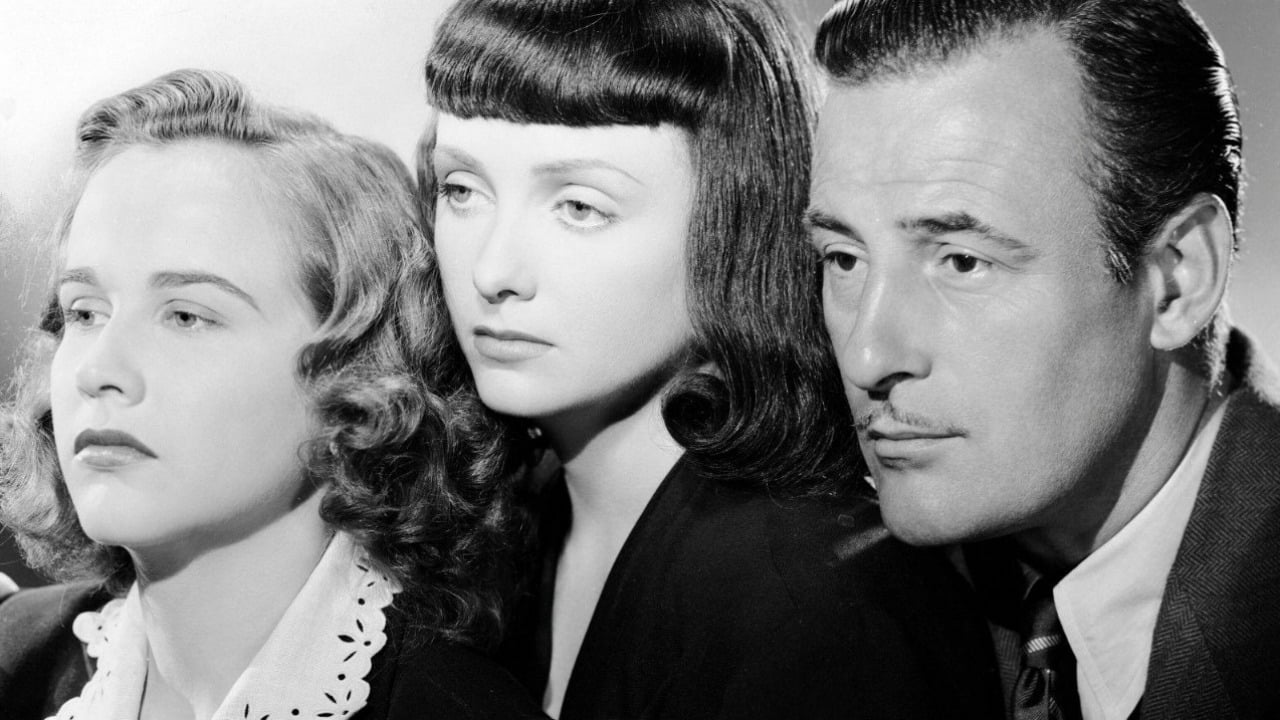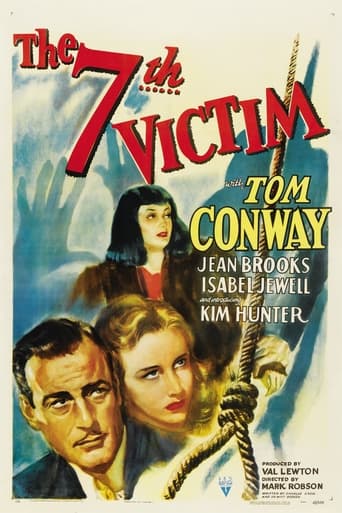

Surprisingly incoherent and boring
... View MorePurely Joyful Movie!
... View MoreHorrible, fascist and poorly acted
... View MoreOne of the film's great tricks is that, for a time, you think it will go down a rabbit hole of unrealistic glorification.
... View MoreThe teenager Mary Gibson (Kim Hunter) is summoned by the dean of her private school to come to her office. Mary learns that her tuition is late since her sister Jacqueline Gibson (Jean Brooks), who is an industrialist of cosmetics in New York, is missing. Mary decides to travel to New York to seek her sister out. In her search for Jacqueline, she meets the lawyer Gregory Ward (Hugh Beaumont), who married her sister, and the psychiatrist Dr. Louis Judd (Tom Conway), who seems to know Jacqueline's whereabouts. She discovers that Jacqueline's factory now belongs to her manager and a mysterious private eye offer to look for Jacqueline. Soon Mary learns that her sister joined a secret society that worships the devil that wants to kill her since she has disclosed their existence. What will Mary do?"The Seventh Victim" is a messy, boring and annoying film of horror genre at least in 1943. The plot is confused and senseless, with silly and ridiculous situations and dialogues. Kim Hunter in the role of a naive teenager is funny. Do not try to watch this film if you are tired; otherwise you will certainly nap. My vote is five.Title (Brazil): "A Sétima Vítima" ("The Seventh Victim")
... View MoreSchoolgirl Kim Hunter (Mary) is called to the office of the Headmistress Ottola Nesmith and told that she can no longer stay on as a pupil as her sister Jean Brooks (Jacqueline) has stopped paying her fees. More than that, Brooks seems to have gone missing. So, Hunter goes off to find her. But Brooks isn't so easy to locate.This film leaves you with scenes stuck in your mind, so it's good from that perspective. It is also well shot with an eerie atmosphere. Scenes that stand out include the sequence with Hunter and a detective exploring an office at night and the subsequent spooky train ride, a shower scene that will make you think of "Psycho" (1960) and pretty much every scene with Brooks. Fancy a drink? – no thanks but the pressure is on. And how about that ending? Wow, pretty bleak stuff. Especially coming after what had me cringing as we watched God and the Bible being used as a tool to counter Satan and his ways in an extremely simplistic way.Amo, Amas, Amat, Amamus, Amatis, Amant – remember your Latin from school? The 'ablative absolute' and the 'ut' clause (use the subjunctive). Quamquam. This film also throws in some Latin and I'm glad to hear it. It takes the viewer back to a time sadly long gone as we hear schoolgirls reciting the verb 'Amo' – to love. The day will come when a generation will watch this film and not understand what language it is.The cast are OK with Jean Brooks standing out. Her look suggests she is leader of the occult movement rather than a victim of it. And all of her scenes are quality – some genuinely scary, and all unworldly because of her appearance. That ending with the neighbour comes as a shock and leaves an eerie memory that will have you thinking about how we view life. It's an interesting film and sad.
... View MoreOften I do cut older movies some more slack because of the limitations they had but this one pretty much failed in all aspects for me. Most of the movie revolves around a young woman, still a student, seeking for her older sister who has disappeared. Some people want to help her in her quest others are less helpful. The movie muddles on a bit with a few things happening, some boring dialog. The movie never really gets going, you never get to know any of the characters (all uninteresting) well. Apparently totally out of the blue the husband or was it boyfriend of the missing girl has feelings for the youngest sister. And than there is also that mysterious sect which doesn't fit in very well in the whole thing. No this really was a big mess.
... View MoreThe debut film from director Mark Robson (Earthquake), I found this in the book 1001 Movies You Must See Before You Die, so I was curious to see it only rated two out of five stars by critics, but I soldiered on anyway. Basically at Miss Highcliff's boarding school in upstate New York, young Mary Gibson (introducing Kim Hunter) is informed that her sister Jacqueline (Jean Brooks), her only relative, is missing and has not paid her tuition for six months, Mary can only stay on if she pays the tuition by working for them. Instead Mary leaves the school and returns to New York City to find her sister, she finds out Jacqueline sold her cosmetics business eight months ago, her sister's rented apartment is empty, with only a chair and a noose hanging from the ceiling, this makes Mary much more anxious and determined to find Jacqueline. In her investigation Mary is lead to Jacqueline's secret husband Gregory Ward (Hugh Beaumont), failed poet Jason Hoag (Erford Gage), and mysterious psychiatrist Dr. Louis Judd (Tom Conway) who was treating Jacqueline as her patient for depression, routed from her membership in the Palladists, a Satanic cult who she was seduced into joining by her former co-workers. Private eye detective Irving August (Lou Lubin) is enlisted to help the investigation, but he murdered by stabbing under mysterious circumstances, but Dr. Judd helps Mary find her sister, but Ward has found himself falling in love with Mary, Jacqueline was hiding from the cult. But members of the cult find and kidnap Jacqueline, and she is condemned to death, a rule of the cult is that anyone who reveals the cult exists must die, she would be the seventh person to die under this rule, hence the film title, but they have rules against violence, and she is already suicidal, so they tell her she should kill herself. Jacqueline refuses to kill herself, so the Palladists allow her to leave, but she is followed by an assassin, she manages to avoid him and returns to Mary's apartment, next to her own, she briefly encounters her young terminally ill neighbour Mimi (Elizabeth Russell), she is afraid to die but plans a last night out on the town. While Mary and Ward find affection for each other during their time together, in the end Jacqueline goes back to her own apartment and hangs herself, the chair thudding after falling is heard, but the sick woman does not recognise the sound as she leaves. Also starring Isabel Jewell as Frances Fallon, Evelyn Brent as Natalie Cortez and Ben Bard as Mr. Brun. In her first leading role Hunter proves an upcoming talent, she indeed out performs co-stars Conway and Beaumont screaming on cue and looking constantly nervous, three years later she was cast in A Matter of Life and Death, then she won an Oscar for A Streetcar Named Desire, and then came three Planet of the Apes films, pretty good considering. As for the film itself, this does feel creepy and atmospheric, the best sequences being with the cult members being forceful and sadistic towards their victims, but the script is rather underwritten, full of some clichés, and there are just better horror films. Okay!
... View More